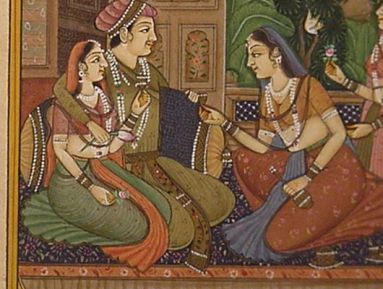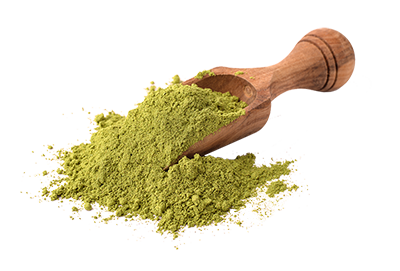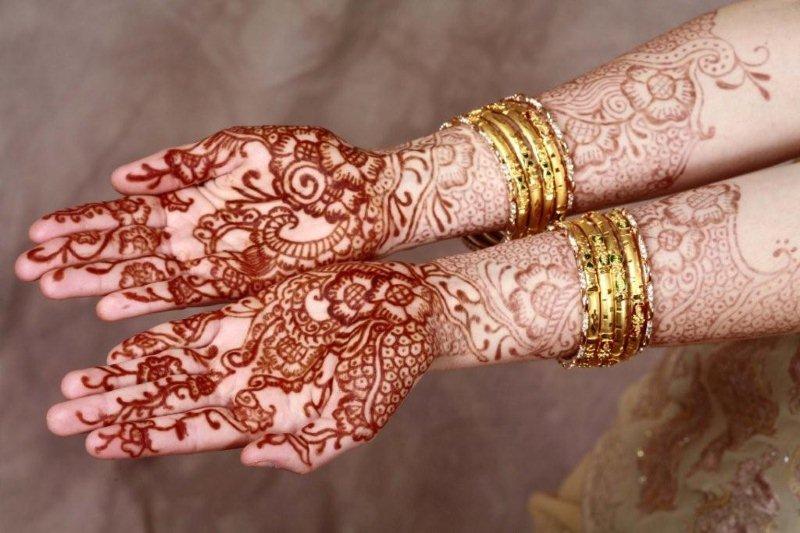About Henna - The Henna Plant, History, Traditions and Uses
Origin of Henna
The art of henna (called mehndi or mehendi in Hindi & Urdu languages) has been practiced for over 5000  years in Pakistan, India, Africa and the Middle East. Some documentation dates it to over 9000 years old. Because henna has natural cooling properties, people of the desert, for centuries, have been using henna to help control their body temperature. They would make a paste from the crushed dried leaves of the henna plant and soak their palms and soles of the feet in it to get a cooling affect. The cooling sensation was felt throughout the body for as long as the henna stain remained on their skin. Initially, as the stain faded away, it left patterns on the skin's surface which led to ideas of making designs for decorative purposes. In the ancient Egyptian times even mummies wore henna designs and it is documented that Cleopatra herself used henna for decorative purposes.
years in Pakistan, India, Africa and the Middle East. Some documentation dates it to over 9000 years old. Because henna has natural cooling properties, people of the desert, for centuries, have been using henna to help control their body temperature. They would make a paste from the crushed dried leaves of the henna plant and soak their palms and soles of the feet in it to get a cooling affect. The cooling sensation was felt throughout the body for as long as the henna stain remained on their skin. Initially, as the stain faded away, it left patterns on the skin's surface which led to ideas of making designs for decorative purposes. In the ancient Egyptian times even mummies wore henna designs and it is documented that Cleopatra herself used henna for decorative purposes.
Henna was not only a popular accessory for the rich but the poor, who could not afford jewelry, used it to decorate their bodies as well.
Henna in the West
Today people all over the world have adopted the ancient tradition of embellishing their bodies with the beautiful natural artwork created from the henna plant. In the 90's it became a very popular form of temporary bodily decoration in the USA, and has become a growing trend ever since. Celebrities like Madonna, Gwen Stefani, Yasmine Bleeth, Liv Tyler, and Xena, among others, have proudly adorned their bodies with henna and showed them off in public, movies, videos, etc. People throughout the West have adopted this Eastern tradition in their lives by having their hands and feet painted for weddings, bellies painted during pregnancy, heads patterned with henna while going through chemotherapy, scars camouflaged to make them unnoticeable, and so on. Henna has also become a worldwide trend as a temporary tattoo since it can be made to resemble a real tattoo but it comes without the pain or long term commitment.
The Henna Plant
 Henna (Lawsonia inermis, also known as hina, mehndi,henna tree, mignonette tree, Egyptian privet) is a flowering plant that grows 12-15 feet high and comes from the sole species of the Lawsonia genus. The English name "henna" comes from the Arabic term الحناء (al-ḥinnā). The name henna also refers to the dye prepared from the henna plant and the art of temporary tattooingfrom those dyes. Henna has been used for centuries to dye skin, hair, and fingernails, as well as fabrics including silk, wool, and leather.
Henna (Lawsonia inermis, also known as hina, mehndi,henna tree, mignonette tree, Egyptian privet) is a flowering plant that grows 12-15 feet high and comes from the sole species of the Lawsonia genus. The English name "henna" comes from the Arabic term الحناء (al-ḥinnā). The name henna also refers to the dye prepared from the henna plant and the art of temporary tattooingfrom those dyes. Henna has been used for centuries to dye skin, hair, and fingernails, as well as fabrics including silk, wool, and leather.
Henna was used for cosmetic purposes in the Roman Empire, Convivencia-period Iberia and Ancient Egypt, as well as other parts of North Africa, the Horn of Africa, the Arabian Peninsula, the Near East and South Asia. It can be found widespread in other hot climates like Pakistan, India and Australia. The plant grows best in heat up to 120F degrees and contains more dye at these temperatures. Inversely, it wilts in temperatures below 50F degrees. It also grows better in dry soil, as opposed to damp soil. The leaves are in opposite decussate pairs and vary in sizes from approximately 2-4 cm. long. The flowers are fragrant, produced in conical panicles 1040 cm long, each flower 5 mm diameter, with four white petals. The fruit is a dry capsule 68 mm diameter, containing numerous 12.5 mm seeds.
The henna plant contains lawsone which is a reddish-orange dye that binds to the keratin (a protein) in our skin and safely stains the skin. The stain can be from pale orange to deep burgundy depending on the quality of the henna and how well ones skin takes it. A good henna, fresh from hot & dry climates, will stain the darkest.
Cultural Uses
Henna is used for many reasons including:
- Self-expression
- Celebrations like weddings, baby blessings, holidays & birthdays
- Inspiration
- Reminders - e.g. writing a message to remind yourself of someone that is important in your life
- Beauty and adornment - a form of jewelry or body decoration
- Cosmetic treatment - e.g. cover up for a scar/tattoo

- Blessings & well-being - blessing a new bride or a new child
- To be part of an ancient tradition
- Alternative or precursor to a tattoo
Medicinal Properties
- Medicine: Henna is considered an herb, and has long been known to have healing qualities. It is used topically and usually not ingested or inhaled. In ancient times it has been applied to the skin surface for healing headaches, stomach pains, burns (including sunburns), open wounds, fevers, athlete's foot and even the prevention of hair loss.
- Sunblock: Henna has been used on the noses of animals to prevent sunburn. It will also leaves tan lines after a sun tan if used as body decoration.
- Insect Repellant: It is often applied to goat skin bags, and other leather, after they have been salt-cured. It "insect-proofs" or "moth-proofs" the bags by making the skin poisonous/inedible for those creatures.
- Anti-Fungal: Because of its well-known anti-fungal properties, in ancient Ayurveda medicine, henna paste is applied on the skin to reduce athlete's foot and other fungal diseases.
Click here to learn more about henna and other ingredients.
Weddings and Other Henna Traditions
Henna is traditionally used for special occasions like holidays, birthdays and weddings in Africa, Pakistan, India, and the Middle East. The most popular of the traditions is the Mehndi (henna) Night where the bride, her family, relatives and friends get together to celebrate the wedding to come. This night is filled with games, music and dance performances that may have been rehearsed for months prior to the event by those closest to the bride. During this, the bride gets extensive henna patterns done on her hands and feet that go to her elbows and sometimes, knees. The bridal patterns can take hours and are often done by multiple henna artists. The guests will usually receive small designs (tattoos) on the backs of their hands as well.
birthdays and weddings in Africa, Pakistan, India, and the Middle East. The most popular of the traditions is the Mehndi (henna) Night where the bride, her family, relatives and friends get together to celebrate the wedding to come. This night is filled with games, music and dance performances that may have been rehearsed for months prior to the event by those closest to the bride. During this, the bride gets extensive henna patterns done on her hands and feet that go to her elbows and sometimes, knees. The bridal patterns can take hours and are often done by multiple henna artists. The guests will usually receive small designs (tattoos) on the backs of their hands as well.
Today, brides prefer to have their henna done prior to the mehndi night so that they can enjoy the festivities and also have a deeper stain by the wedding day.
Tradition holds that for as long as the henna stain appears on the bride, she doesn't have to do any housework! It is said that the darker the stain the better the marriage and the better the mother-in-law will be, so you can imagine why the bride would want the stain to come out dark and last as long as possible!
Temporary Henna Tattoos
For body decorations, the leaves of the henna plant are dried, crushed into a fine powder, and made into a creamy paste using a variety of techniques. This paste is then applied to the skin, staining the top layer of skin only. In its natural state it will dye the skin an orange or brown color. Although it looks dark green (or dark brown depending on the henna) when applied, this green paste will flake off revealing an orange stain. The stain becomes a reddish-brown color after 1-3 days of application. The palms and the soles of the feet stain the darkest because the skin is the thickest in these areas & contain the most keratin. The farther away from hands and feet the henna is applied, the lesser the color. The face area usually stains the lightest.
Henna works on all skin types and colors. It looks just as beautiful on dark skin as it does light skin but because some people skin may take the dye better than others, it can look more prominent on one and not as much on another. Nevertheless, henna is a symbol of beauty, art, and happiness and is meant for everyone!
Fun Fact: Because henna acts as a sunblock, there is that added benefit for having henna designs in the summer. For those who love to get a tan, remember: it leaves tan lines! In order to benefit from this, it is best to get a henna design, let its natural color stay on for 3-5 days and then go and get a tan. This way you can enjoy the natural henna color on your body, the henna color with the tan, and then tan lines in the shapes of the design (once the henna fades away)! The tan lines last as long as the actual tan!
How long do henna stains last?
The designs generally last from 1-4 weeks on the skin surface depending on the henna, care and skin type. The palms, soles of the feet, and other rough areas like the knuckles stain the darkest. The stain on the hands fades away the fastest from continued washing and can last up to two weeks. The forearms and lower legs and ankles last the longest and go up to 4 weeks, sometimes longer! In areas where there are less keratinized cells, the henna will stain the lightest and will disappear faster. These areas include the upper arms, back, tummy, chest, face, etc.
In the hair the henna is permanent. It may fade but it is hard to remove.
Henna for the Hair
Henna is a natural permanent dye that is widely used throughout the world for its color and amazing benefits to the hair. Henna hair coloring dates back thousands of years and has been used by both men and women to dye their hair, beards, mustaches and even the hair of animals. It is a fast growing trend in the natural hair industry because it is a healthy alternative to the toxic chemical dyes found in the market. Henna does the opposite for the scalp and hair that synthetic dyes do. It actually makes the hair stronger, shinier, healthier and rejuvenates dry, dull and damaged hair. The more it is applied the better it is for the hair. Synthetic dyes, on the other hand, may not only damage the hair but also ones health. Another fun fact about henna is that those who are sensitive to synthetic hair dyes can often benefit from henna hair dye.
Following is a a great article to read up on if you are interested in learning more about henna as a hair dye: Top 10 Myths About Henna
Benefits of Henna for the Hair
- It colors the hair an orange to rich red color and mixed with other herbs it can give you many other color variations from light red blonde to black.
- It strengthens the hair and helps prevent breakage and split ends
- It helps prevent hair fall and thinning of the hair
- It makes the hair shiny and lustrous
- It conditions the hair
- It's anti-fungal and anti-parasitic properties keep the lice out and help prevent fungal diseases in the scalp
- It rejuvenates dry, dull and damaged hair by closing and smoothing the cuticle
- It is often used by people with sensitive skin and cancer patients because of its gentle properties.
- It often softens the hair. The hair might feel straw-like if used over bleached hair because the extra coating of the henna can make the hair stiffer after bleaching. The grow-out, however, will feel very soft.
Disadvantages of henna
- Not everything natural suits everyone so henna may not be for everyone. It is best to do a strand test and a patch test and consult a physician before using.
- Henna is a permanent hair dye. It doesn't come out of the hair so the hair has to grow out for the color to be removed. It will thus fade so the color will be lighter through time.
- Henna on its own is a reddish-orange dye so it will color the hair red unless used with other herbs, such as indigo and amla.
- It may be difficult to use a synthetic dye over henna depending on the chemicals in the dye. So once you have the color, you might have to wait for it to grow out before using other colors. The natural herbal hair colors that we sell, however, can be used over henna any time without harm to the hair.
Article written by: Kaniz F. Shah
Edited by: Nawal Zahra
Last update: 4/24/2020
Resources:
Where to Buy Henna Tattoo Supplies?
Henna Tattoo Techniques and Tutorial
Henna Gallery

Silk & Stone 100% Natural Henna & Herbal Hair Dye
Our Henna and Herbal Hair Dye kits are specifically formulated for easy home use.
- Our hair dye kits are 100% pure and natural and made solely from leaves, fruits and seeds.
- We use only the finest plant materials that are organically grown and of the highest quality found worldwide.
- Our hair dyes are free of chemicals, preservatives and any other harmful ingredients.
- Our purpose is to give you a healthy alternative to hair coloring that is safe for your hair, scalp and overall health.


